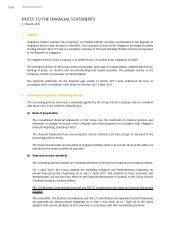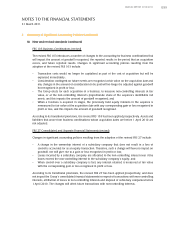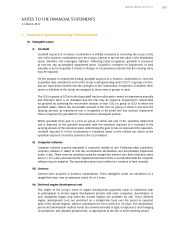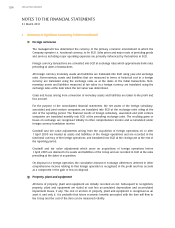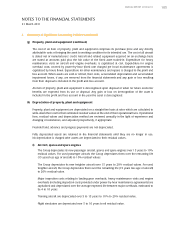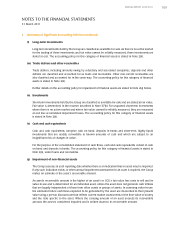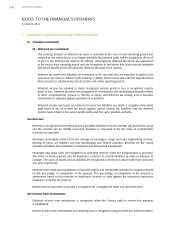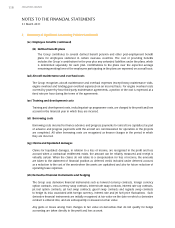Singapore Airlines 2011 Annual Report Download - page 110
Download and view the complete annual report
Please find page 110 of the 2011 Singapore Airlines annual report below. You can navigate through the pages in the report by either clicking on the pages listed below, or by using the keyword search tool below to find specific information within the annual report.SINGAPORE AIRLINES
108
NOTES TO THE FINANCIAL STATEMENTS
31 March 2011
2 Summary of Significant Accounting Policies (continued)
(k) Financial assets
Financial assets are recognised on the statement of financial position when, and only when, the Group
becomes a party to the contractual provisions of the financial instrument. The Group determines the
classification of its financial assets at initial recognition.
When financial assets are recognised initially, they are measured at fair value, plus, in the case of
financial assets not at fair value through profit and loss, directly attributable transaction costs.
A financial asset is derecognised where the contractual right to receive cash flows from the asset
has expired. On derecognition of a financial asset in its entirety, the difference between the carrying
amount and the sum of the consideration received and any cumulative gain or loss that had been
recognised in other comprehensive income is recognised in profit or loss.
All regular way purchases and sales of financial assets are recognised or derecognised on the trade
date, i.e., the date that the Group commits to purchase or sell the asset. Regular way purchases or sales
are purchases or sales of financial assets that require delivery of assets within the period generally
established by regulation or convention in the marketplace concerned.
(i) Financial assets at fair value through profit and loss
There are two sub-categories: financial assets held for trading, and those designated as fair
value through profit or loss at inception. A financial asset is classified in this category if acquired
principally for the purpose of selling in the short term. This category includes derivative financial
instruments entered into by the Group that are not designated as hedging instruments in hedge
relationships as defined by FRS39. Derivatives are also classified under this category unless they
are designated as hedging derivatives. Gains or losses on financial assets held at fair value through
profit and loss are recognised in the profit and loss account.
Assets in this category are classified as current assets if they are either held for trading or are
expected to be realised within 12 months after the end of the reporting period.
(ii) Loans and receivables
Non-derivative financial assets with fixed or determinable payments that are not quoted in an
active market are classified as loans and receivables. Such assets are carried at amortised cost
using the effective interest method, less impairment. Gains and losses are recognised in the profit
and loss account when the loans and receivables are derecognised or impaired, as well as through
the amortisation process.
(iii) Available-for-sale investments
Available-for-sale investments are non-derivative financial assets that are either designated
in this category, or not classified in any other categories. After initial recognition, available-
for-sale investments are measured at fair value with gains or losses being recognised in other
comprehensive income until the investment is derecognised or until the investment is determined
to be impaired whereby the cumulative gain or loss previously reported in equity is included in
the profit and loss account.


